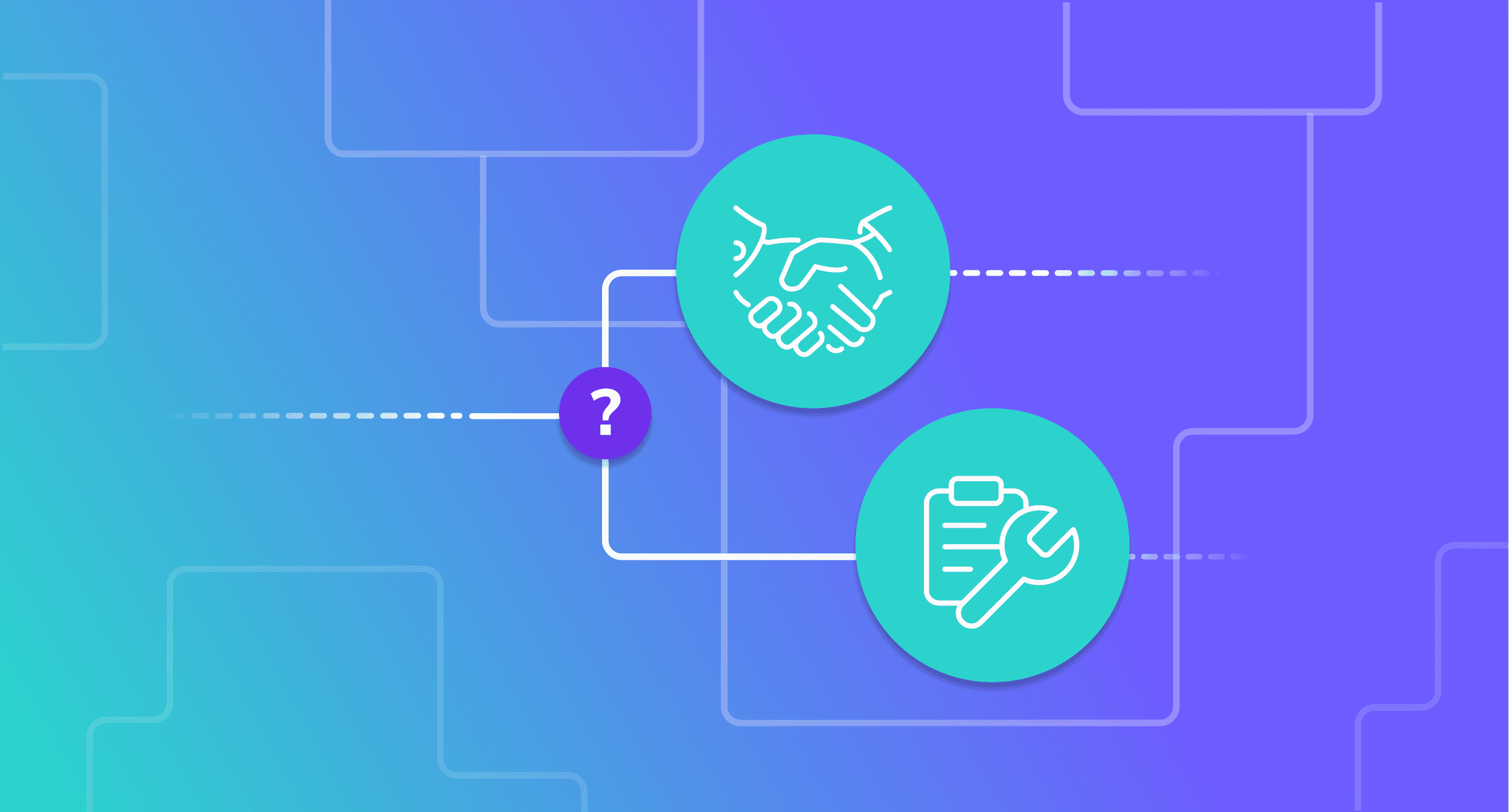
Oct 4, 2023
Build vs. Buy: Making the shift to API technology for benefits enrollment
This in-depth guide looks at the build versus buy decision from multiple angles to help you navigate the path to API-powered enrollment.
In a world where consumers see convenience and immediacy as the norm, even the best benefits experiences can feel slow and complex in comparison. This gap between expectations and reality has employers increasing their use of, and investment in, benefits technology:
90% have digitized at least some parts of their benefits enrollment process.
80% expect to increase spend on benefits tech to address their top benefits challenges.
79% say a carrier’s digital capabilities play a bigger role in carrier selection.
75% of broker agencies pitch benefits technology when going after new business.
As the market consolidates around software that’s easier and faster to use, the method you utilize to clean, structure, and share enrollment data across connected systems becomes even more of a competitive advantage — and soon, a requirement for every player in the space.
The shift to API-powered data exchange
While file-based protocols like EDI still work well to standardize business processes, they can only facilitate one-way communication and are expensive to scale in today’s real-time world. In contrast, APIs offer a standardized way for many different applications to exchange data and when done right, allow data to be used and understood in real-time.
With APIs, your business can:
Quickly integrate with new partners. Enable plug-and-play infrastructure so that any partner can exchange data in a standardized way.
Power a faster, more automated experience. APIs reduce the time it takes to get groups set up and enrolled to days, instead of weeks. They eliminate the need to configure files, key data into portals, and send PDFs or paper.
Enable new levels of transparency. APIs send data to the carrier and read data out so you can monitor the status of member changes, confirm they’re completed correctly, and use fresh carrier data to improve other workflows.
Improve data accuracy. APIs can enforce granular data validations and business logic, as well as continually audit data, surfacing issues before they impact members.
“Employers didn't use to care about carrier APIs, but we're starting to see them pay more attention now. They've been able to see those transactional benefits through accurate billing, fewer headaches, and most importantly, covered and protected employees."- Greg Autuori, Senior Vice President of Operations, Bennie
Understanding the build vs. buy dilemma
Adopting modern API solutions and scaling connectivity across a broad network of partners drives growth, but at what cost?
As carriers slowly upgrade systems behind the scenes, benefits software platforms are faced with building complex integrations with each carrier that will need to be managed and upgraded over time. On the other hand, third-party technology partners can offer an established network of connected carriers that gets you to market faster with an improved enrollment experience.
As you might expect, there are many tradeoffs, and there’s no perfect solution. Most players in the market today are experimenting with both build and buy strategies, applying them when they make the most sense.
This guide looks at the build versus buy decision from multiple angles, including commentary from Greg Autuori, Senior Vice President of Operations at Bennie, and Jake Bendler, Division Vice President - National Accounts and National Partners at Ameritas, from our recent webinar Build, Buy, APIs: Powering real-time experiences for benefits administration.
Here’s what we’ll explore:
Technical and operational considerations (ensuring what you build or buy is better than the status quo)
Network strategy and time-to-market (how to think about scaling a carrier network and the different approaches in the market)
Cost considerations (a basic framework for understanding the total cost of ownership at scale [CapEx + OpEx])
Long-term strategy (understanding how technology should support the business in the long-term)
Ready to read the full guide? Access it here.
If you do benefits, you need Noyo
The future of employee benefits is faster, easier, and more automated. Are you ready?

